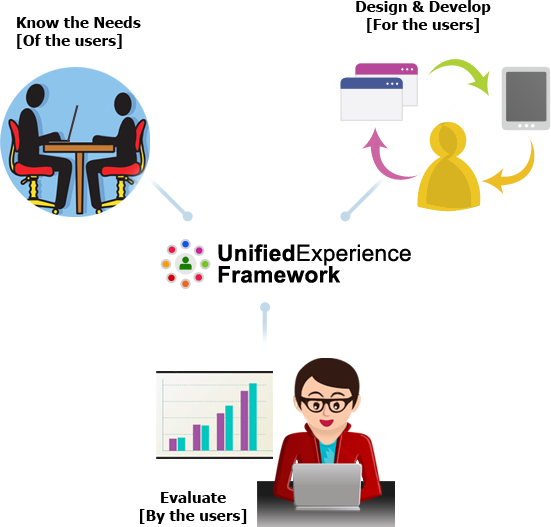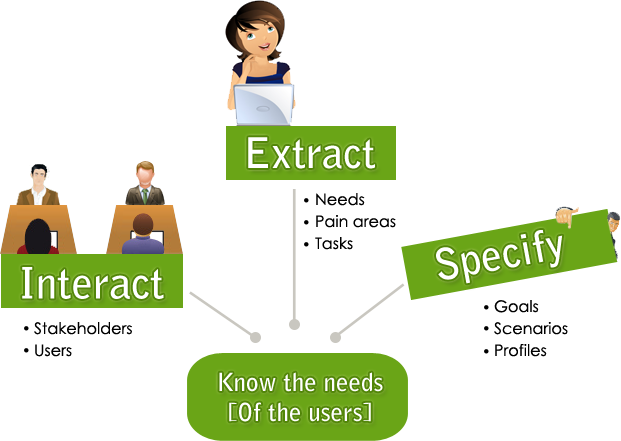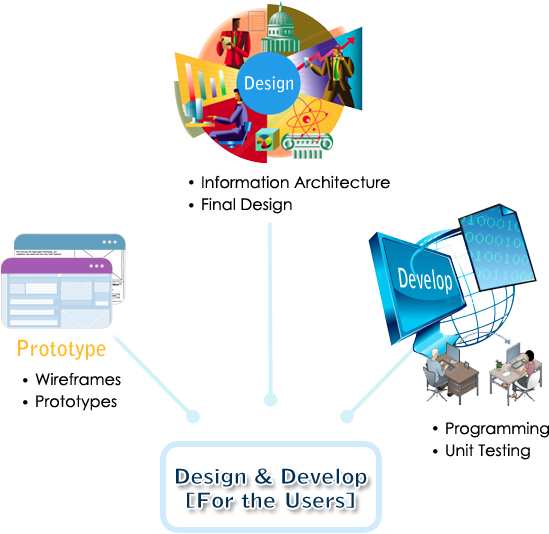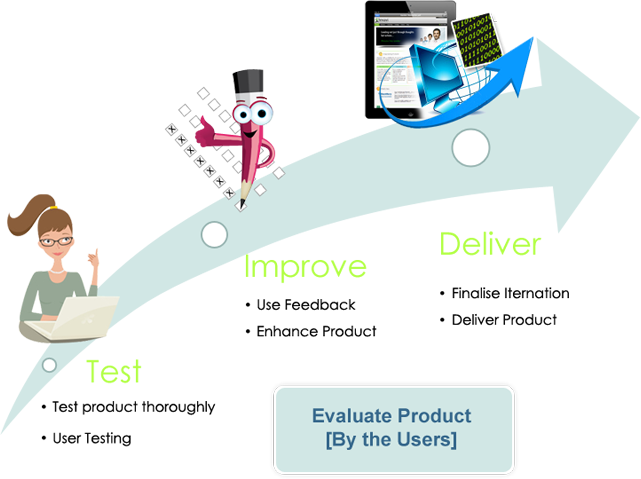Home > Consulting > User Experience Innovation > Unified Experience Framework > Overview
Texavi's Unified Experience Framework
Texavi evolved the Unified Experience framework by blending the best practices of Usability Engineering into Software Engineering. The outcome is not just a software product but one that is innovative and offers positive and compelling user experiences.
Texavi's Unified Experience framework is aimed at designing and developing innovative products, modeled around users. The tried and tested methodology is divided into three process areas, given below. Each of the process areas in turn, is made up of activities, goals, and associated artifacts. The process areas are not necessarily sequential in nature, and can be performed independent of each other.

Know the needs [Of the users]
The first process area is aimed at the discovery and setting of context for the product initiation. This can be mapped to the requirements and analysis phases in the traditional software development life cycle.

The 'Know the needs' process area comprises the following activities which are further categorized into tasks and associated artifacts. Note that these are not dependent on one another and the decision to include or exclude them is based on the nature of the product and availability of resources.
| Activity | Task | Artifacts/ Outputs | ||||
| Interact |
|
|
||||
| Extract |
|
|
||||
| Specify |
|
|
Design and Develop [For the users]
The second process area focuses on the solution, whereby the product is given a shape by the development team. This can be mapped to the Design and Implementation phases in the traditional software development life cycle.

The 'Design and Develop' process area comprises the following activities which are further categorized into tasks and associated artifacts. Note that these are not dependent on one another and the decision to include or exclude them is based on the nature of the product and availability of resources.
| Activity | Task | Artifacts/ Outputs | ||||
| Prototype |
|
|
||||
| Design |
|
|
||||
| Develop |
|
|
Evaluate products [By the users]
The third process area helps make the product fit for delivery and ready to be shipped. This can be mapped to the Testing and Delivery phases in the traditional software development life cycle.

The 'Evaluate product' process area comprises the following activities which are further categorized into tasks and associated artifacts. Note that these are not dependent on one another and the decision to include or exclude them is based on the nature of the product and availability of resources.This is an iterative approach and is implemented continuously to make the product better, time and again.
| Activity | Task | Artifacts/ Outputs | ||||
| Test |
|
|
||||
| Improve |
|
|
||||
| Deliver |
|
|
Recent Blog Posts
Leader. Architect. Soldier. Team player - the many facets of Business Analyst
Fostering innovation the fun and interactive way
Hey Business Analyst, where are the requirements
Brochures
Texavi Corporate Brochure - Our Offerings & Services
Texavi IMAGINEERING - 2013 brochure
Presentations
Tools, methods and techniques for Newage Business Analyst
Collaborative product development through innovation games
Mastering the art and science of business analysis







